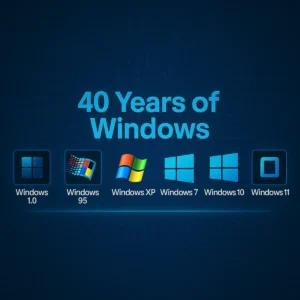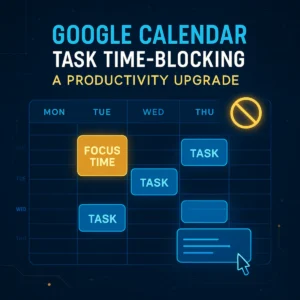Microsoft Windows has officially turned 40 years old, marking four...
Read More
Microsoft Windows has officially turned 40 years old, marking four decades of innovation, missteps, and reinvention. The anniversary highlights how Windows evolved from a simple graphical shell into the dominant operating system powering billions of devices today.
This article explores the 20 key milestones, both legendary and infamous, that shaped Microsoft’s OS and influenced the direction of modern computing.
The Highs: Windows at Its Peak
Windows 1.0 – A Bold Beginning
Windows 1.0 launched in 1985 as a graphical layer on top of MS-DOS.
While basic, it made computing more accessible and laid the foundation for the GUI era.
Windows 3.1 – Where It Took Off
Windows 3.1 refined the interface and introduced TrueType fonts, making it viable for business and creative use.
It marked the beginning of Windows as a global standard.
Windows 95 – The Blueprint of Modern Computing
Windows 95 defined the future of desktop OS design with the iconic Start Menu and taskbar.
Its launch was a cultural moment that made Windows mainstream.
DirectX & PC Gaming Takes Off
The introduction of DirectX transformed the PC into a powerhouse gaming platform.
This API jump started decades of gaming innovation and set Windows apart from macOS and Linux.
Windows 7 – Redemption After Vista
Windows 7 delivered speed, stability, and refinement.
It quickly became one of the most beloved versions of Windows, still used by many long after support ended.
The Lows: When Windows Missed the Mark
Windows Vista – Ambitious but Overloaded
Vista had modern ideas, new visuals, improved security, DirectX 10, but demanded too much from hardware at the time, resulting in sluggish adoption.
Windows 8 – Touch Over Everything
Windows 8 attempted to reinvent the desktop for tablets by removing the Start menu.
It alienated traditional users and became one of Microsoft’s most controversial releases.
Windows RT & The Mobile Misfire
Microsoft tried to compete in mobile with ARM based Windows RT and Windows Phone, neither gained traction.
A strategic stumble that cost years of momentum.
The Early Edge Browser Struggles
Even though Edge today is strong, the first iteration suffered from compatibility issues and user distrust.
The Modern Era: AI, Design, and the Future
AI and Windows 11 – The Next Transformation
Microsoft is now baking AI directly into Windows:
- Copilot
- AI-enhanced search
- Automated workflows
- Smarter system optimization
This shift marks a new direction beyond the traditional OS.
A Visual Legacy
From the iconic Bliss wallpaper to the Windows 11 glass smooth design, Windows played a huge role in shaping digital aesthetics.
Where Windows Goes Next
With hybrid work, cloud ecosystems, and AI all accelerating, the next era of Windows will likely be more modular, more cloud connected, and more automated.
Conclusion
After 40 years, Windows remains the defining force in desktop computing. Its history is filled with breakthroughs, rebuilds, misfires, and reinventions, but through it all, it stayed relevant and resilient. Understanding its journey helps us understand how modern computing evolved, and where Microsoft plans to take the OS next.
Call to Action
Stay tuned to EagleEyeT for deep dives into operating system history, Windows optimization guides, and modern security workflows for your digital environment.
ChatGPT Personal Plus vs ChatGPT Pro: What’s the Difference in 2025?
ChatGPT has become a daily tool for millions of users,...
Read MoreHow to Identify the Latest Phishing Attacks (2025 Guide)
Phishing continues to be the most successful cyber attack vector...
Read MoreGoogle Calendar Puts Task Management Right Where You Work
In a world overloaded with apps, notifications and fragmented workflows,...
Read More



Leave a Reply